When to Plant Sunflowers: A Guide for Gardeners
Best time to plant sunflowers is in the late spring or early summer when the soil temperature has warmed to at least 50°F (10°C) . This usually falls between March and May, depending on where you live. However, if you live in a cooler climate, you may need to wait until spring to plant your sunflowers.
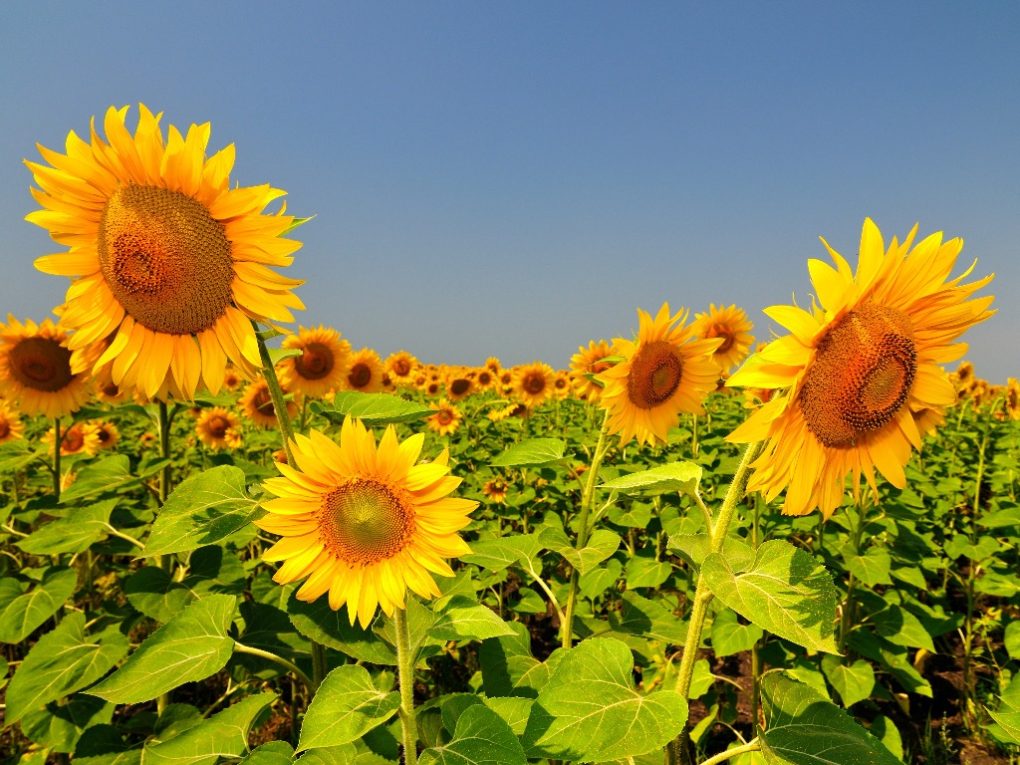
Sunflowers are popular for many gardeners due to their bright, cheerful blooms and easy-to-grow nature. However, knowing when to plant sunflowers can be tricky. The timing of planting sunflowers depends on several factors, including your location, climate, and the type of sunflower you want to grow.
There are a few different options for planting sunflowers, including starting seeds indoors or planting them directly in the ground. No matter which method you choose, it’s vital to ensure that the soil is well-draining and that the sunflowers receive plenty of sunlight throughout the day. With the right timing and care, you can enjoy a beautiful display of sunflowers in your garden all summer long.
Table of Contents
Climate and Soil Considerations
When planting sunflowers, it’s essential to consider your area’s climate and soil conditions. Here are factors to keep in mind:
Geographic Location
Geographic location is vital in determining the ideal time to plant sunflowers. Gardeners in the northern regions of the United States should plant sunflower seeds between late April and mid-July. In contrast, gardeners in the southern regions can plant as early as mid-March or early April.
The best time to plant sunflowers is when the soil has warmed to at least 60 degrees Fahrenheit. Gardeners can use a soil thermometer to determine the soil’s appropriate temperature.
Soil Type
The type of soil is also crucial when planting sunflowers. Sunflowers thrive in well-draining soil with a pH range of 6.0 to 7.5. Therefore, soil preparation before planting is essential by removing weeds and rocks and adding organic matter such as compost.

If the soil is heavy clay, mixing sand and compost is best to improve drainage. But on the other hand, if the soil is sandy, adding organic matter to improve water retention is important.
It’s also crucial to avoid planting sunflowers in soil recently fertilized with nitrogen. For example, nitrogen can cause the sunflowers to grow too tall and become top-heavy, making them more susceptible to wind damage.
Time of Year to Plant Sunflowers
Sunflowers are a popular and easy-to-grow plant that can add a bright and cheerful touch to any garden or landscape. Knowing the best season of year to plant sunflowers can help ensure a successful and abundant harvest.
Spring Planting
For most regions, the best time to plant sunflowers is spring, after the last frost has passed. This allows the sunflowers to grow and mature during the warm summer and bloom in the late summer or early fall. Spring planting is ideal for sunflowers because the warm and moist soil helps the seeds germinate quickly and grow strong roots.
When planting sunflowers in the spring, choosing a location that receives plenty of sunlight is important, as sunflowers require at least six to eight hours of direct sunlight daily. The soil must be well-draining and rich in nutrients, and the seeds should be planted about 1 inch deep and 6 inches apart.
Summer Planting
In some regions, it may be possible to plant sunflowers in the summer, especially if the weather is mild and the soil is moist. Summer planting can be a good option for gardeners who missed the spring planting window or want to extend their sunflower harvest into the fall.
When planting sunflowers in the summer, choosing a location that receives plenty of sunlight is important, as sunflowers require at least six to eight hours of direct sunlight daily. The soil must be well-draining and rich in nutrients, and the seeds should be planted about 1 inch deep and 6 inches apart.
It is important to note that summer planting can be more challenging than spring planting, as the hot and dry weather can make it difficult for the sunflowers to establish strong roots and grow to their full potential. Therefore, gardeners may need to water their sunflowers more frequently and provide extra shade or protection from the sun.
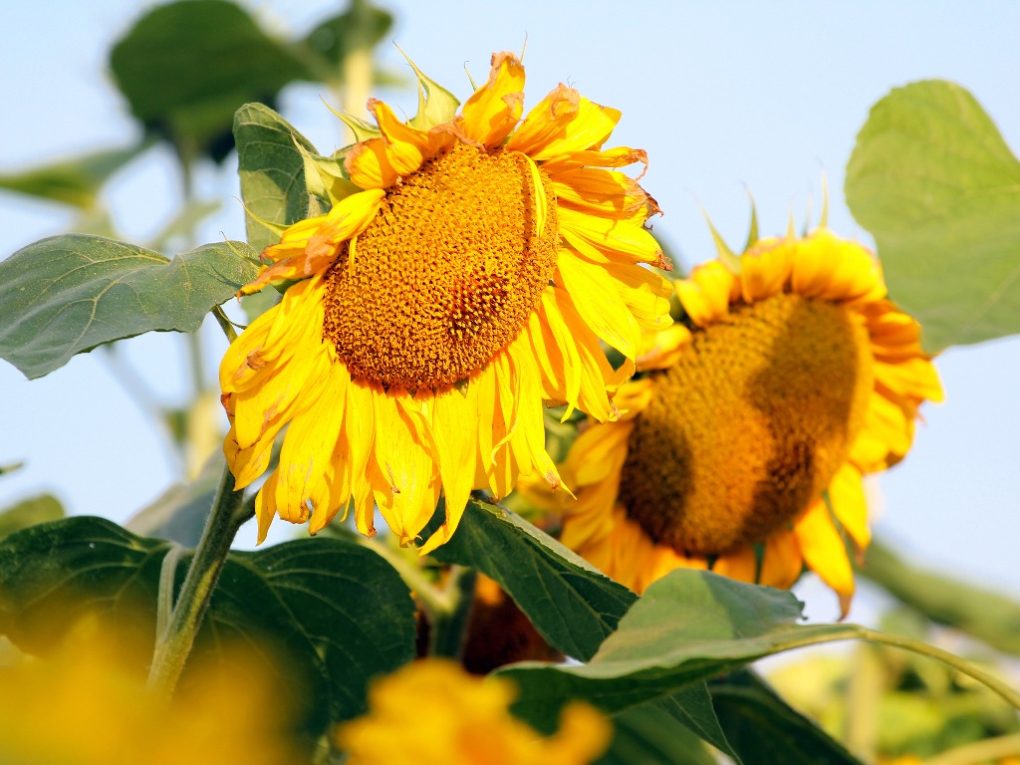
Planting Techniques
Direct Seeding
Direct seeding is a common method of planting sunflowers. Sunflowers are hardy plants and can tolerate a wide range of soil types. To direct seed sunflowers, follow these steps:
- Choose a sunny location with well-draining soil.
- Prepare the soil by removing any weeds or rocks and loosening the soil to a depth of 6-8 inches.
- Sow the seeds about 1 inch deep and 6 inches apart.
- Water the area around the seeds, but be careful not to overwater.
- Thin the seedlings once they reach about 6 inches tall, leaving the strongest plants about 12 inches apart.
Transplanting
Transplanting sunflowers is a less common method of planting, but it can be useful in areas with a shorter growing season. To transplant sunflowers, follow these steps:
- Start sunflower seeds indoors about 4-6 weeks before the last frost date in your area.
- Transplant the seedlings outdoors once the soil has warmed and all frost danger has passed.
- Choose a sunny location with well-draining soil.
- Prepare the soil by getting rid of any weeds or rocks and loosening the soil to a depth of 6-8 inches.
- Dig a hole for each seedling and plant it at the same depth it was in its container.
- Water the area around the seedlings, but be careful not to overwater.
- Provide support for the sunflowers as they grow taller.
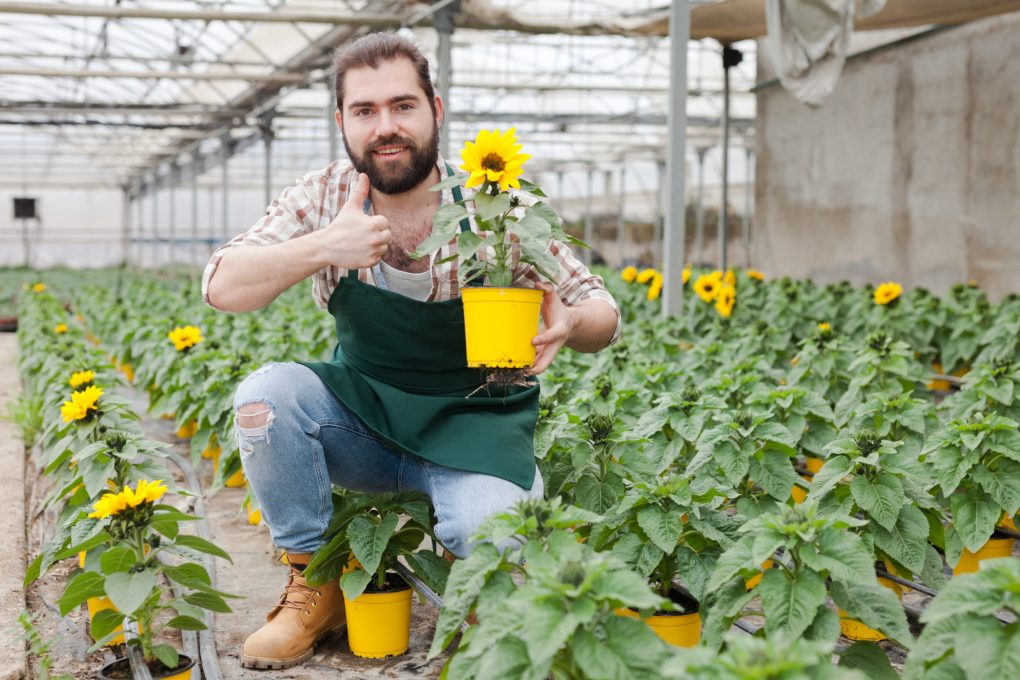
Both direct seeding and transplanting can be effective methods of planting sunflowers. The choice of method depends on the growing conditions and personal preference of the gardener.
Maintenance and Care
Once the sunflowers have been planted, it is crucial to take proper care of them to ensure healthy growth and blooming. The following sub-sections will guide how to water, fertilize, and control pests for your sunflowers.
Watering
Watering is crucial for sunflowers to grow properly. Sunflowers require regular watering, especially during the hot summer months. Keeping the soil moist but not soaked is important, as excessive water can lead to root rot. Watering should be done at the base of the plant to prevent getting water on the leaves, which can lead to fungal diseases.
The frequency of watering will depend on the weather and soil conditions. In general, sunflowers need about 1 inch of water per week. However, they may require more frequent watering during hot and dry weather. Monitoring the soil moisture level and adjusting the watering accordingly is important.
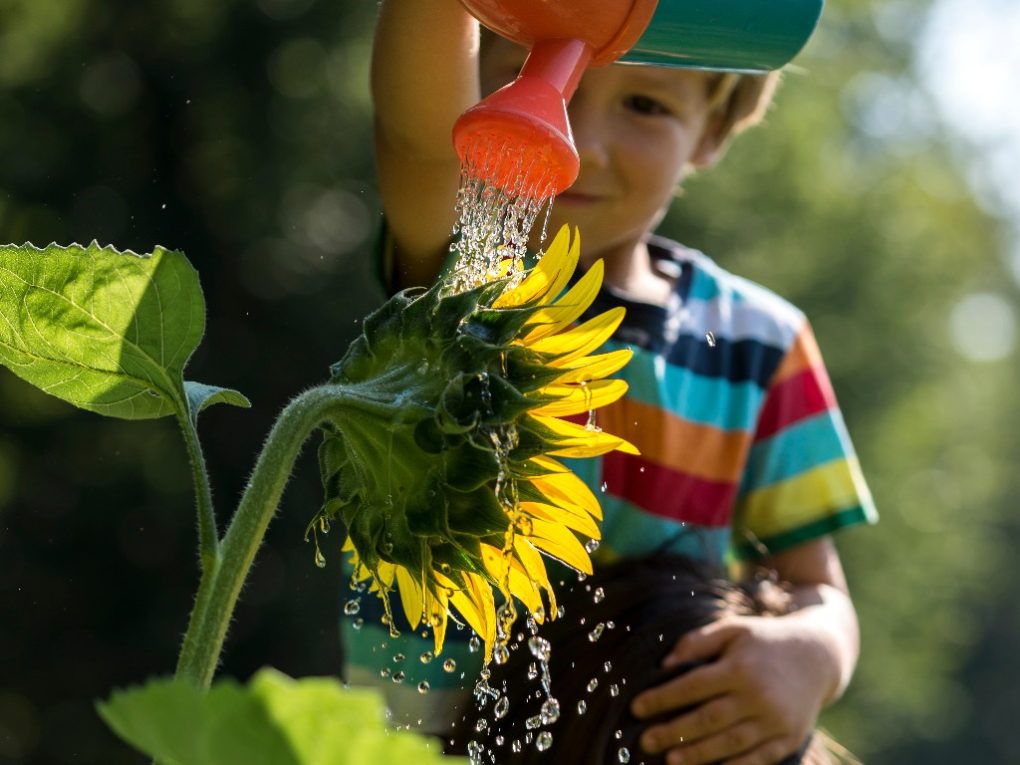
Fertilizing
Providing proper nutrients to the sunflowers is important for their growth and blooming. Sunflowers require nitrogen, phosphorus, and potassium for healthy growth. Fertilizers should be applied when the sunflowers are in their vegetative growth stage. This is typically 2-3 weeks after planting.
Organic fertilizers such as compost or manure can be used to provide nutrients to the sunflowers. Alternatively, chemical fertilizers can also be used. Therefore, it is important to follow the instructions on the fertilizer package for proper application.
Pest Control
I’ve witnessed sunflowers susceptible to pests such as aphids, slugs, and snails. It is important to monitor the plants regularly for any signs of infestation. If pest problems are detected, several methods can be used to control them.
- Hand-picking: This involves physically removing the pests from the plants.
- Insecticidal soap: This is a natural and non-toxic method of controlling pests. It works by suffocating the pests.
- Neem oil: This is another natural method of controlling pests. It works by disrupting the life cycle of the pests.
It is important to use pest control methods that are safe for the environment and do not harm beneficial insects such as bees and butterflies.
Harvesting Sunflowers
Harvesting sunflowers is a rewarding experience for gardeners as they enjoy the fruits of their labor. Sunflowers can be harvested for their seeds, which can be eaten or replanted for the next season. Here are some tips for harvesting sunflowers:
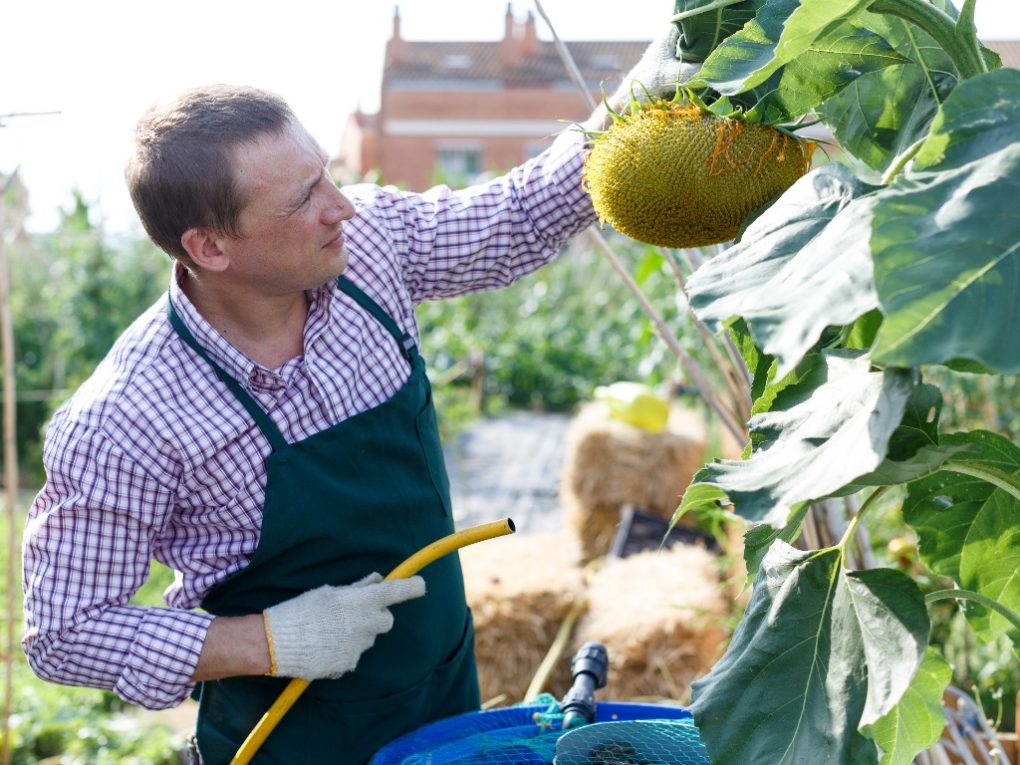
- Timing: Harvesting sunflowers at the right time is crucial. The best time to harvest sunflowers is when the back of the flower head turns brown, and the seeds are plump. It will be necessary to harvest sunflowers to prevent the seeds from drying out, making them difficult to roast or eat.
- Method: To harvest sunflowers, cut the stem of the flower head, leaving a few inches of stem attached. Place the flower head in a paper bag or hang it upside down in a dry, well-ventilated area. This will allow the seeds to dry out and become easier to remove.
- Removing Seeds: Remove them from the flower head once the seeds are dry. To do this, rub the seeds with your hands or use a fork to scrape them off. Discard any seeds that are discolored or faded.
- Storing Seeds: Store the seeds in an airtight container in a cool, dry place. Sunflower seeds can last up to a year if stored properly.
- Other Uses: Sunflower petals can be harvested and used in salads or garnish. The petals can be harvested when the flower head is fully open, and the petals are bright yellow.
Harvesting sunflowers is a simple process that can provide a bountiful harvest. By following these tips, gardeners can enjoy the delicious taste of sunflower seeds and the beauty of sunflower petals.
